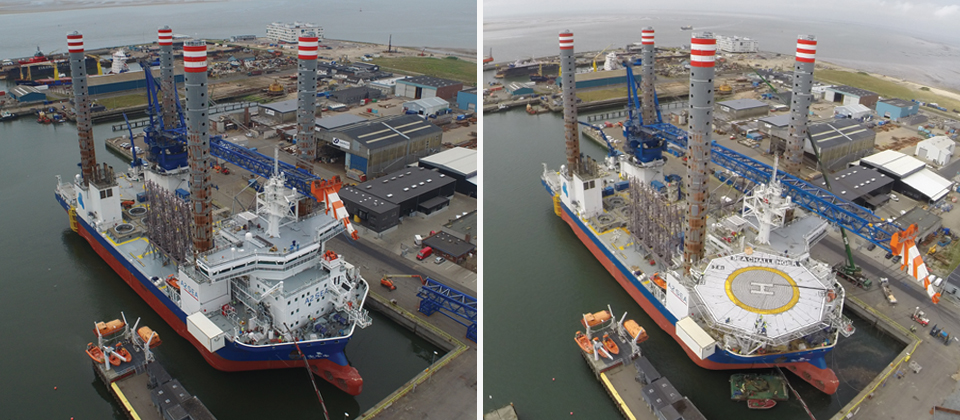
By Steen Drue,
Project Manager, A2SEA
When the mobilisation gets tough, the tough get mobilising
Monday, 30 June 2015: SEA CHALLENGER began mobilisation prior to installing 97 Siemens 6MW turbines at the Gode Wind 1+ 2 wind farms in the North Sea.
The task, which took place from 30 June to 31 July, called for the preparation of sea fastenings for turbine components, an extension of the main crane boom and the installation of a helideck. And, of course, everything had to be done in parallel and in a safe, well-coordinated manner. For added complexity, planned maintenance would be carried out simultaneously, too.
DEDICATED TEAM
During May, a special mobilisation site was created at the Port of Esbjerg, fenced-in and access-controlled by A2SEA. A mobilisation team of 10, including a vessel superintendent, project engineers, mobilisation manager, site manager, and site safety manager was deployed, and the client was represented. An office was set up solely for handling work permits, and the project group was also joined by the vessel’s crew.
Finally, there were the contractors – around 25 separate companies in all. Some during the entire period, some on and off. In fact, at any given time, as many as 50 contractor staff were working on board and on shore at the site.
CAREFUL COORDINATION
A facility adjacent to the site was rented for assembling the helideck, delivered from Norway in pieces. After assembly, one wall of the facility was removed entirely to transfer the helideck over to the vessel, and it was lifted in one piece onto the helideck substructure installed earlier during the mobilisation.
The big challenge was the coordination between all the different works, because we needed the boom section out of the way on the quay before we could transport the helideck. And of course, while we did the
crane boom extension we had no crane ourselves, so we had a large number of mobile cranes rented for the purposes, which added to the challenges.
Extending the boom 20 metres, for example, may not seem like a big difference on a 100-metre boom, but it’s a lot of work – especially when you have to make allowances for the other operations at the same time. Many kilometres of wires have to be spooled off, the boom taken apart, the extension added on, then the wires spooled back again – a process that takes more than three weeks to complete.
Despite the many simultaneous tasks, work was completed right on time – bang on time for the vessel’s delivery on August 1, fully operational in all aspects. This was a great team effort that showcases the professionalism now characterising much of the industry. And the client appreciated the on-time, fully operational delivery, too!
Like this post? Subscribe now and get notified about new content!